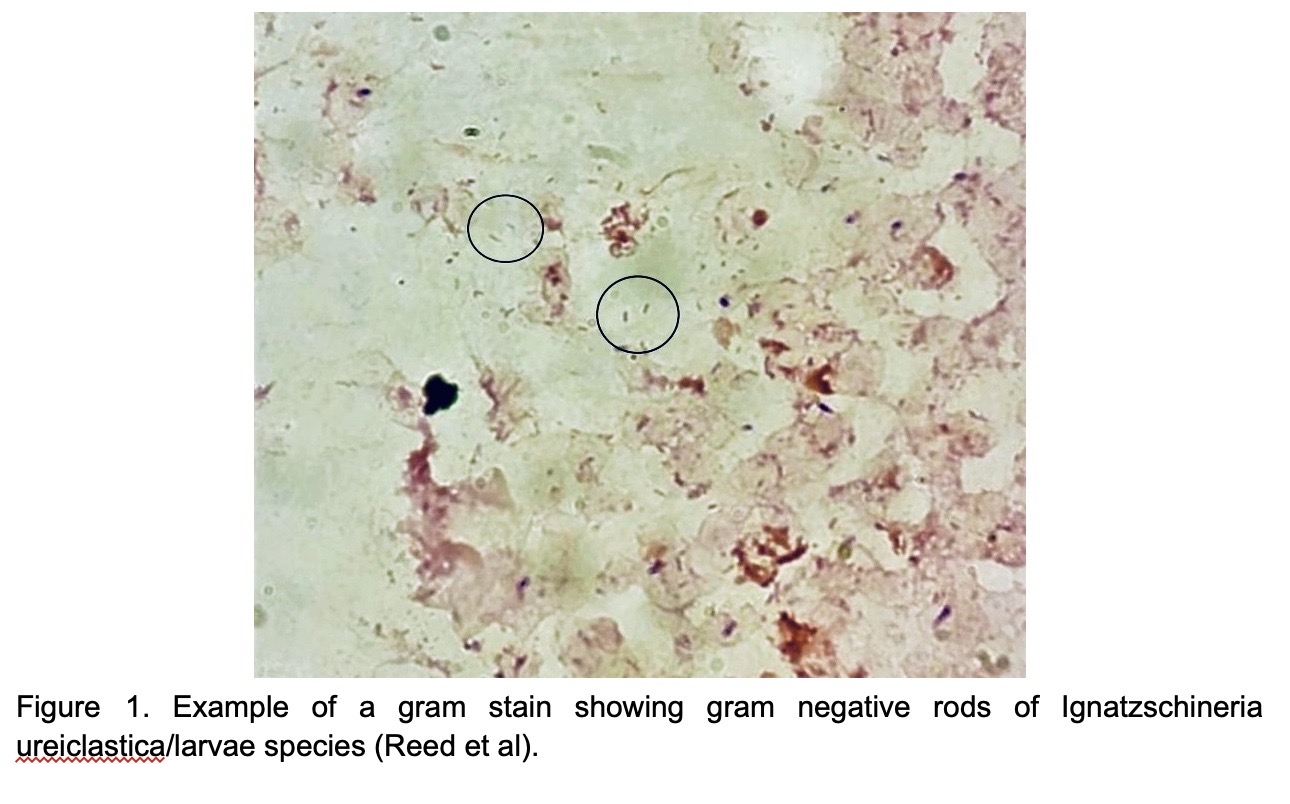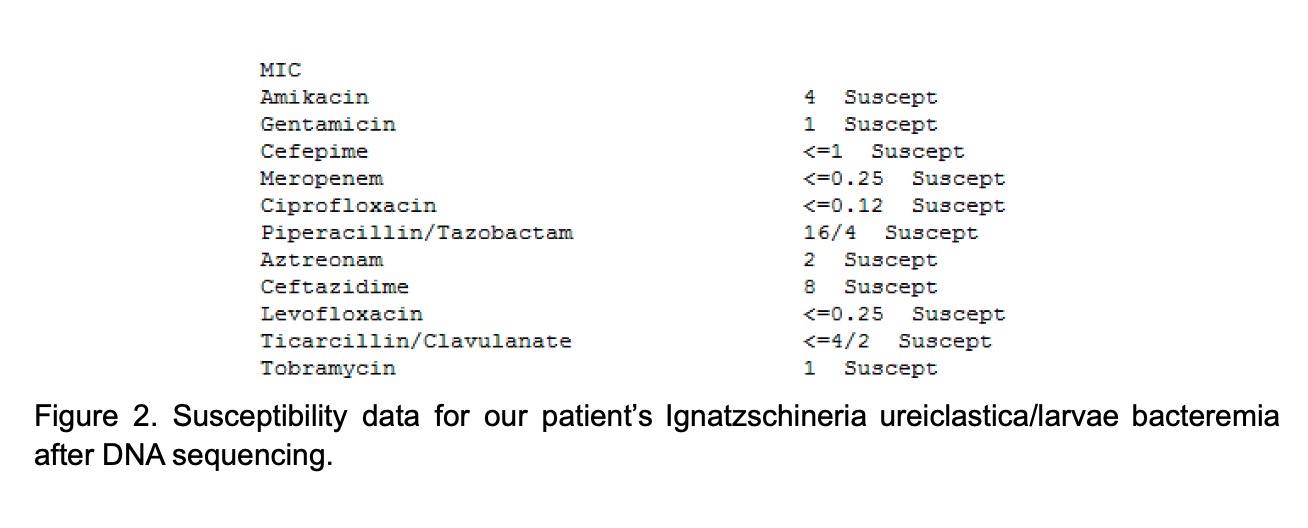Case Presentation: A 60-year old woman with a history of chronic lower extremity wounds presented to the emergency department after sustaining a right lower extremity injury from an unknown mechanism one week ago. In experiencing housing and financial instability, she was sleeping on park benches and wrapping the wound in newspapers and fabrics. She noticed maggots and insects inside the wound and increased pain, but had no fevers, chills, or wound discharge. On exam, she was afebrile and had superficial wounds with mild edema, erythema, and warmth to the anterior aspect of the right ankle, dorsum of right foot and interdigital spaces. Extensive maggot burden was noted underneath the newspaper, but no deep wounds or crepitus. She had palpable distal pulses and decreased sensation of the lower extremities. CT scan showed soft tissue edema, but no underlying soft tissue gas, erosion, or fluid collection. Blood cultures were drawn on admission and she was placed on broad-spectrum antibiotics after thorough irrigation and bedside debridement by plastic surgery. Both blood cultures from admission grew Erysipelothrix rhusiopathiae and Ignatzschineria ureiclastica. She could not remember any contact with any animals or recent bites. She finished her course (14 days) with amoxicillin-clavulanate without complications.
Discussion: Ignatzschineria is a more recently identified genus of bacteria that is isolated from the digestive tract of multiple species of flies found among sheep and livestock, and is exceedingly rare in human disease. Only ten cases have been documented in humans worldwide, with the first case of bacteremia in the U.S. cited in 2021 in Kentucky near a slaughterhouse. This gram-negative rod (Figure 1) usually inhabits the intestines of Wohlfahrtia magnifica fly larvae. Our patient’s Ignatzschineria specimen was susceptible to penicillin therapy, and a spectrum of other antimicrobials (Figure 2).E. rhusiopathiae is a pleomorphic, non-spore forming, gram-positive bacillus that can cause self-limited soft tissue infections or serious systemic infections such as endocarditis. It is usually found in domestic and marine animals such as sheep, horses, cattle, chickens, turkeys, crabs, fish, dogs, and cats. Thus, it is generally diagnosed as an occupational exposure in butchers, farmers, veterinarians, and aquarium workers. It is usually penicillin sensitive, which made monotherapy feasible for our particular patient.
Conclusions: Patients with wounds that are exposed to the elements and to maggots may be at risk for infection and bacteremia by this emerging species of bacteria called Ignatzschineria. It is also important to be aware of new pathogens that may affect more vulnerable populations such as individuals who are experiencing homelessness and may be exposed to animals and livestock. It is concerning that more cases of Ignatzschineria are being discovered in the U.S. More investigation will be needed to localize sources of infection outside of the known occupational exposures in order to find sources of contamination and avoid further incidences. Additional characterization of Ignatzschineria bacteria may also guide how physicians and epidemiologists test and select maggots for treatment of chronic wounds in the surgical realm.


